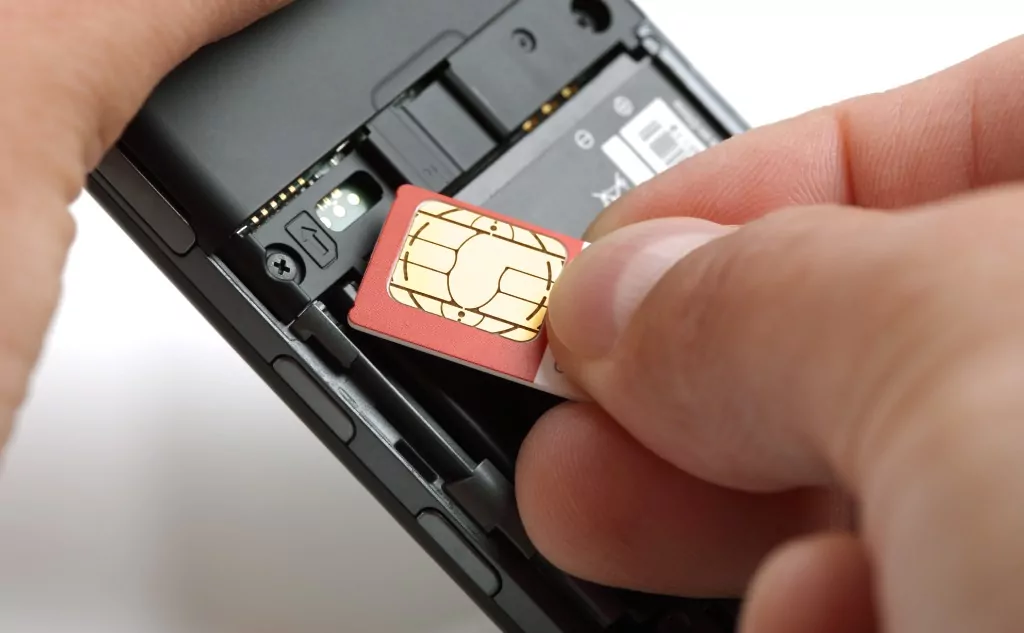Here’s how to connect to Wi-Fi without a SIM card.
The short answer: Just like you would with a SIM card.
So if you want to learn all about connecting your phone to Wi-Fi without a SIM card and the technical details, then you’re in the right place.
Let’s get right into it!

Connect Your Phone to Wi-Fi Without a SIM Card
We have been hearing the term Wi-Fi (Wireless Fidelity) everywhere and anywhere. It is a ubiquitous thing.
Wherever we go, we ask for a Wi-Fi password. Whether it’s a restaurant, a cafe, or the bus station, we have access to it.
It’s a valuable thing that lets us connect to the internet wherever an internet connection is available.
We use many apps on our smartphones that need an internet connection. It’s become a must.
We’ve arrived at that point where we’re using something that we don’t understand.
It’s the same with mobile phones, we just use them, but we don’t really know how they work, and what they need.
To make it easier, let’s take a look at:
- What is Wi-Fi?
- How does WiFI work?
- 2.4 GHz vs. 5 GHz
- Wi-Fi hardware
- Is a SIM card necessary to connect to Wi-Fi?
- Wi-Fi and Your Phone
What is Wi-Fi?
Wi-Fi is a group of wireless network protocols.
Wireless networks are a means of communication between computers and other devices using the internet. They are used to supply internet access.
Tablets, mobile phones, laptops, printers, smart TVs, and other devices all use Wi-Fi to work the intended way.
They all used to be connected with cables to the internet access point.
Now, they work properly without cables which makes our lives much easier.
Wi-Fi originated in the Netherlands in 1991. It was created to ease the functionality of the cash register.
The first commercially sold devices with Wi-Fi were Apple’s iBook laptops in 1999.
From that point on, we see technology developing every day and wireless communication with it.
So, how does Wi-Fi work?
How Does Wi-Fi Work?
Wi-Fi works through wireless network protocols.
Protocols, aka “communication protocols,” are rules that determine how the information will be transmitted.
Now, Wi-Fi is a neat thing—it uses these protocols and radio waves to exchange information between nearby devices, and it provides internet access.

It’s like a sprinkler in your backyard. It spreads the water (internet access and radio waves) across the grass in the form of equal distribution. This is why there are so many wireless access points across the globe.
Sometimes, a good old-fashioned cable connection has much more benefits than a Wi-Fi connection.
Speed, strength, especially security, but we’ll focus on Wi-Fi at this time.
However, make no mistakes—Wi-Fi still needs to be connected to a physical source of internet access.
So, what is the necessary Wi-Fi hardware?
Wi-Fi Hardware
Every Wi-Fi network has supporting hardware. It needs to be connected to the point of internet access. It’s the same as the faucet in your home. It is connected to a water source so that you may have water.
The hardware required for running a Wi-Fi network at home is:
- An internet access point: a physical point of connection to the internet that runs through an outlet, and cables that lead to a street pole and your internet provider which is connected to a data center.
- A broadband modem: the device that is connected to the cable in the wall, and it’s used to connect all other devices to the internet via cable. Nowadays, these devices come with integrated wireless routers.
- A wireless router: if not integrated into a device that acts as a modem, it is connected via cable to the modem. In this case, the modem is the internet access point for the wireless router. The router then acts as a wireless access point. It spreads radio waves that connect all the devices at home to the internet.
We can compare all of these to how we get a water supply.
The internet source is your provider, so let’s say that your provider is the water that runs under the ground. Then you have your wells. These are access points for your water supply.
Pipes direct the water to your home so that you can use it. When you connect a hose from the faucet to a sprinkler in your yard, you provide access to the sprinkler, and water gets evenly distributed across the yard.
This is how Wi-Fi works.
The strength of the water flow can depend on the pumps the distributor uses.
The same applies to Wi-Fi. The connection strength and speed depend on a couple of things.
That’s why there are two main types of Wi-Fi: 2.4 GHz and 5 GHz.
2.4 GHz vs. 5 GHz Wi-Fi
Here, we are speaking of radio wave frequency.
Wi-Fi largely depends on the frequency. Think of those spots in your house where you’re getting fewer bars.
The reason is the frequency that the router transmits.
It’s all in the range and speed. From 5 GHz Wi-Fi, you can expect faster data rates in terms of the connection being faster, but it doesn’t cover a lot of ground (area).
That’s because it’s a high frequency that has difficulty penetrating walls and other solid objects.
If you have a wireless router in your home, next to the TV, you’ll know that it’s a 5 GHz frequency when you go to a room on the other end of the house. You’ll simply get lower bars and a sketchy connection.
With a 2.4 GHz frequency, you’ll be able to go anywhere in your home and still have a strong signal. The only disadvantage is that the speed is lower than with a 5 GHz frequency.
So, if you live in a small home and have one wireless router, it’s best to opt for 5 GHz and vice-versa.
Is a SIM Card Necessary to Connect to Wi-Fi?
The short answer is “No.” Think about a smart TV or a tablet, or even your laptop. None of these have SIM slots, let alone SIM cards. Yet, they still connect to Wi-Fi.

A phone can work perfectly fine without a SIM card. If it was an old phone like cell phones before the smartphone revolution, you would need a SIM card to connect to the internet.
All smartphones have integrated wireless drivers (the software necessary for a piece of hardware to run). So, they can all connect to Wi-Fi without the SIM card.
However, a SIM card is one of the integral parts of every mobile phone. With a SIM card, you won’t need to be around a wireless router to have an internet connection. It all depends on your data plan.
These days, almost all data plans contain a considerable amount of internet data you could use to surf the web and social networks, answer emails, etc.
You can use your cellular data to form a cellular network and connect to other devices as well.
Let’s see what we can do with our phones and Wi-Fi.
Wi-Fi and Your Phone
With a SIM card in your device and the Wi-Fi capabilities, almost every modern mobile phone has, you can do a couple of great things.
Internet Tethering
Tethering is basically connecting the internet supply to any device via cable.
So, with your smartphone, you’ll be able to provide internet to another device that has a USB port.
In this case, your smartphone acts as a modem, and you’re using your data to provide an internet connection to your laptop. It’s handy when there’s a power outage due to construction works or maintenance on the transformer.
Any cable connection is faster than a wireless connection, so this can be an advantage. But it still depends on the internet speed your service provider gives you.
Internet Hotspot
Although you don’t need a SIM card to connect to Wi-Fi with your android phone, you need it to create a hotspot.

A hotspot is any location where we have access to a wireless network that connects us to the internet. It’s quite amazing that we can make one with our phones.
Your device uses a driver to connect to a wireless network. The same driver is used to form a hotspot so that other devices can connect to the internet using the data plan you have.
This can come in handy when you’re traveling or in a remote location, and you need to review those reports, but the phone screen is just too small!

